By Miriam Ridge

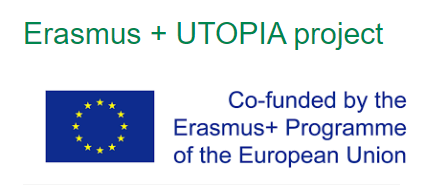
Our final partner visit, the culmination and highlight of the Utopia Outdoor Learning Project, was hosted between 18th – 23rd September 2022 by Carmarthenshire Council in Wales and attended by educators from all seven European partner countries. We visited two flagship eco schools and a range of visitor centres in the beautiful Welsh countryside, to find out about and engage in their inspiring outdoor learning practices.
The New Curriculum for Wales 2022, introduced this year, is designed to promote: welsh language and culture, inclusion, the community and civic role of schools and pupil well-being. The aim is for schools to develop their pupils’ understanding of their ‘cynefin’, the place they’re in, and how it has and continues to be shaped by the cultural heritage and diversity of Wales, it’s landscapes and languages, and the values, histories and traditions of its communities and people. Forming a strong sense of their own identity and well-being, will help pupils to develop an understanding of others’ identities and make connections with them in their local community, elsewhere in Wales and across the globe.
The New Curriculum Framework sets out a cross-curricular, project-based learning approach in which contexts for learning should be real and authentic. It identifies five zones for outdoor learning: outside the classroom; in the school grounds; exploring local neighbourhoods; visits to regional and national learning centres and trips abroad. On our Utopia visit to Wales, we had the opportunity to experience all five in action

Utopia in Wales School Visits
Johnstown Primary School
Johnstown Primary School, in Carmarthen, an English medium school amongst mostly Welsh medium schools, has 500 pupils from a wide catchment area. The Headteacher showed us how he had used government funding effectively to transform the outside learning environment with: raised planters outside the full length if each classroom, and several larger ones beyond these, a sheltered workshop and classroom, an amphitheatre, a secret garden leading to a fort with an elevated classroom, a new path on the perimeter of the school field and a range of planting, including sunflowers, fruit trees and other edible produce.
We met with the teacher, who leads on the development of the outdoor learning curriculum and supports class teachers with the planning and implementation of weekly, carousel style, outdoor learning activities. We observed pupils from a number of classes in various parts of the grounds enjoying Science, Literacy and Maths in group investigations and whole class settings.
Whilst at the School, we also attended an organic gardening workshop run by Kim Stoddart, Guardian writer and author of The Climate Change Garden, who draws on ideas from the past such as: mixed planting, adapting to the environment, including climate and weather changes and therapeutic approaches, connecting with nature through senses and feelings to help pupils improve their emotional regulation, reduce stress and develop mindfulness techniques for inner calm. She showed us how work with pupils to harvest seeds for planting, appreciate the qualities and lifecycle features of a range of herb and vegetable plants, and how to plant different varieties together to promote survival and growth.
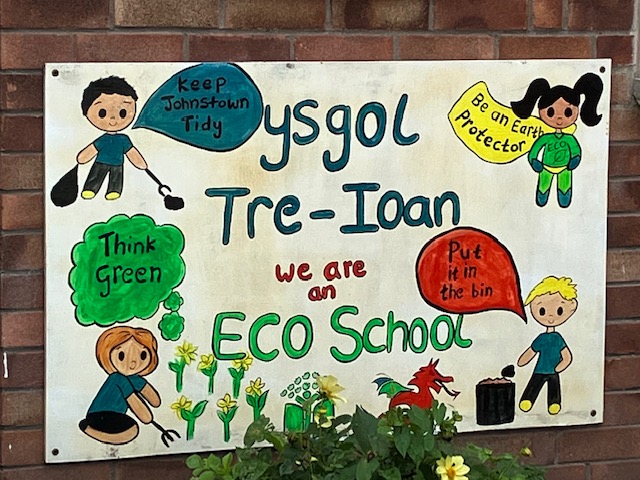
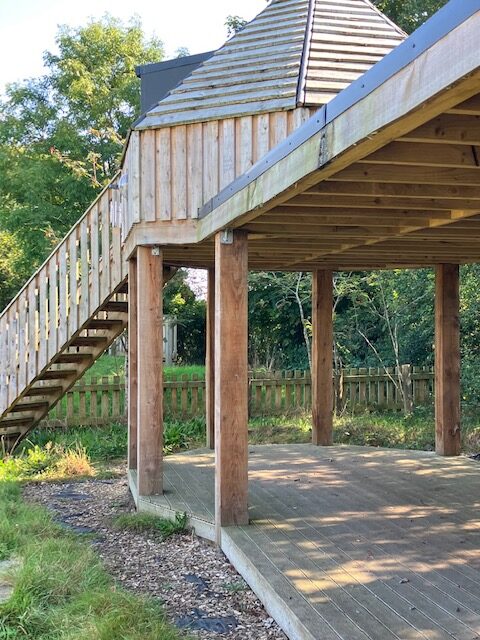
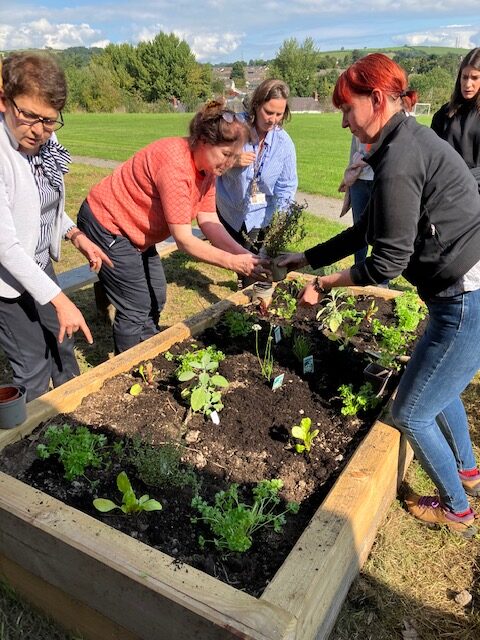
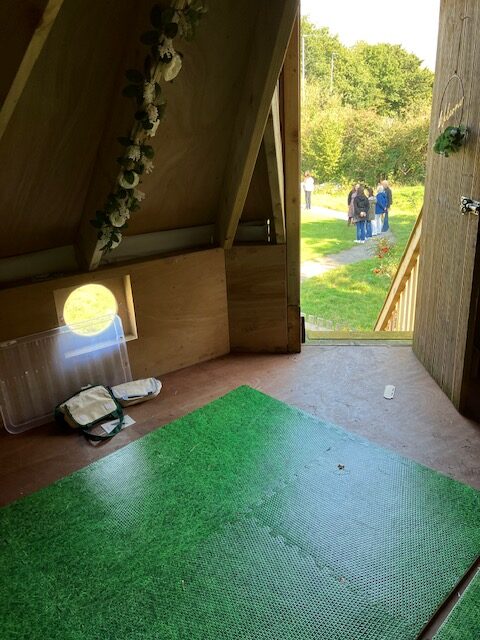
Ysgol Bro Banw
Ysgol Bro Banw, in Ammanford, a dual medium school promoting bilingual competence on two sites in an area of greater socio-economic deprivation, has approximately 470 pupils from the local area and a higher incidence of deprivation. The Infant School has a wild life area for observations and investigation and is planted with indigenous trees, shrubs and bulbs. Pupils maintain the plant pots and raised herb beds. We observed the children take part in carousel activities in the outdoor area, for example, harvesting, counting and cleaning potatoes they’d grown.
The Junior School has: a special unit for pupils with autism with outdoor specialist sensory equipment, an organic vegetable garden, a herb garden, bird boxes, a theatre and a chicken coop. Pupils can volunteer to be Waste Wizards and two of them gave a presentation on the School’s involvement in the Big Bocs Bwyd Project, Bwyd I Bawb (Food for All), through which donations are made by partner food production companies to stock a food bank with links to the local community. Led by a teacher and supported by a teaching assistant, the Project involves pupils taking the initiative by working in the organic garden and making food for sale to pupils and parents, to raise money for the food bank. They also develop their ICT skills, learning how to advertise and present and record of their work. Bwyd I Bawb, helps children and families obtain food at ‘pay as you feel ‘prices, learn how to make healthy food choices and, through authentic experiences, how to grow and cook food.
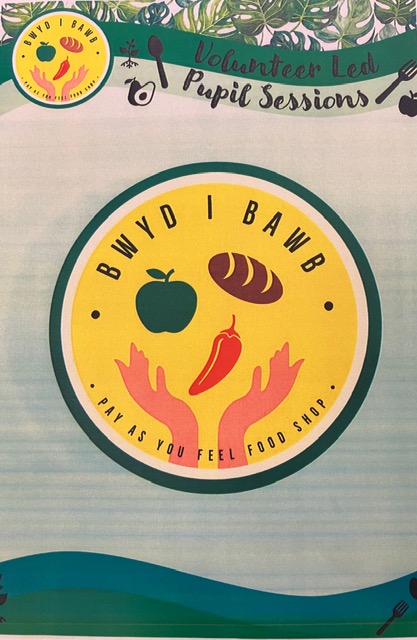

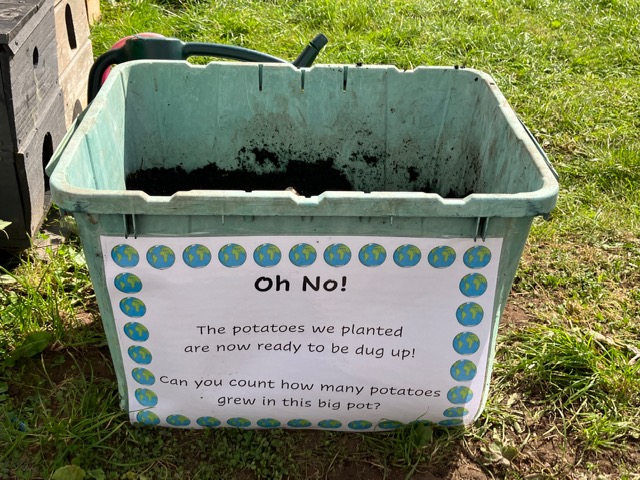
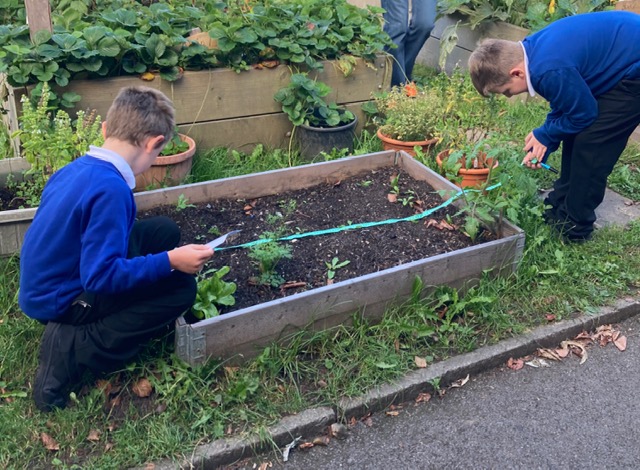
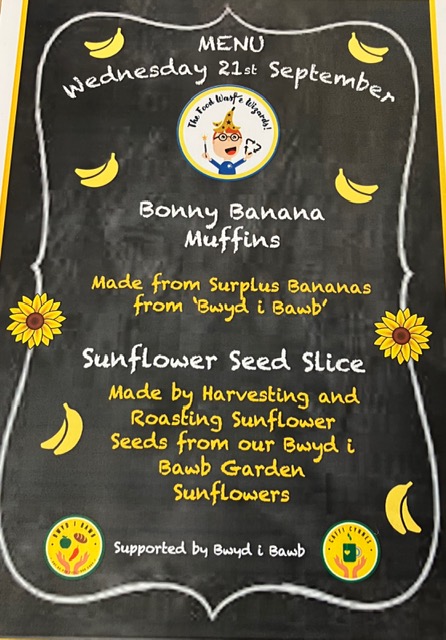
Visitor Centres
Parc yr Escob – The Bishop’s Park
Situated in Abergwili, near Carmarthen, The Bishop’s House and Park, offer a wealth of natural and social history for school visitors. The grounds around the House, including a walled kitchen garden have been designed and planted to replicate Victorian times and beyond these are woodlands, a river meadow and two 400 year-old oak trees. The former palace of the Bishop of St. David’s, now houses the Carmarthenshire Museum, which has numerous items of furniture, historical artefacts and crafts, models and photographs. Through guided tours and observation, pupils can learn all about their local area, history and cultural heritage developing their understanding of cynefin and sense of identity.
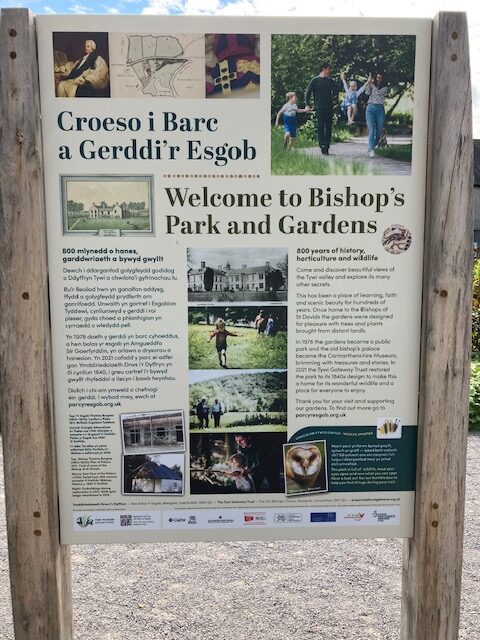
The National Botanic Garden of Wales
This centre for botanical research and conservation in Llanarthney near Carmarthen, the first national botanic garden to be created in the new millennium, and known as the number 1 ‘Wonder of Wales’ with the world’s largest single span glasshouse, containing plants from all climate zones, has welcomed over 2.5 million visitors since opening in 2000. With the mission objectives: conservation, education and inspiration, it’s an ideal outdoor learning experience for children and young people, offering week long courses to home educated children and day workshops for schools in the polytunnel and organic garden where they can learn how to grow vegetables and investigate questions such as, ‘Why do plants flower?’ The Centre has also developed a formula to calculate bee miles, available to all schools, for a pupil activity using quadrants to count different species of wildflowers in their school grounds. For younger folk, there was a fairy garden in the woods with tiny toadstools, perfect for stimulating the imagination.
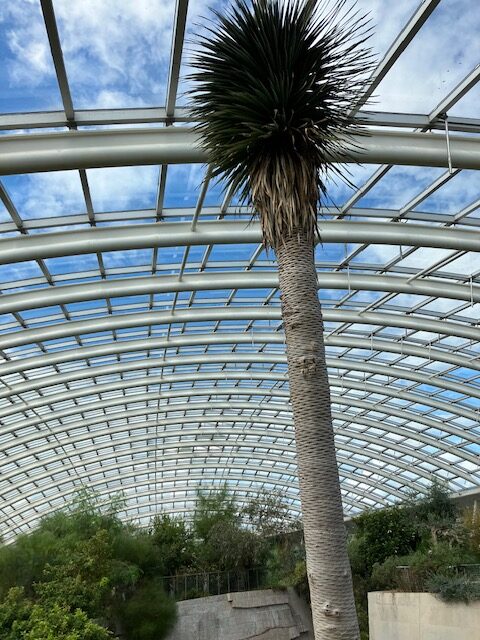
St Fagan’s National Museum of History
Our furthest visit, suitable for a school coach day trip, was to St. Fagan’s Museum near Cardiff City. Situated in the grounds of St. Fagan’s Castle and Gardens, and opened in 1948, St Fagan’s was the UK’s first national open air museum and is the most popular heritage centre in Wales. Funded by the Welsh Government and free to enter, it’s a place where pupils can explore the history of people’s everyday lives together. Over 40 buildings from various times in history, have been preserved by transporting them to the museum grounds, where they are reconstructed to the original, a process which can take years.
Highlights include: a Celtic roundhouse; a 12th century medieval church; a wool mill; a workers’ institute, where miners (some as young as 14) could learn to read and write, and were able to borrow books from the library; reconstructed mid-20th century shops with manual cash registers, including a sweet shop, where visitors can buy, lemon bon bons, gob stoppers, pear drops and sherbet pips among others from a bottle, by weight in imperial measures; and an entire street terrace, with each house representing a different decade. Pupils can explore these grounds and buildings and talk with guides carrying out traditional crafts and activities, bringing their history and cultural heritage into present day life.
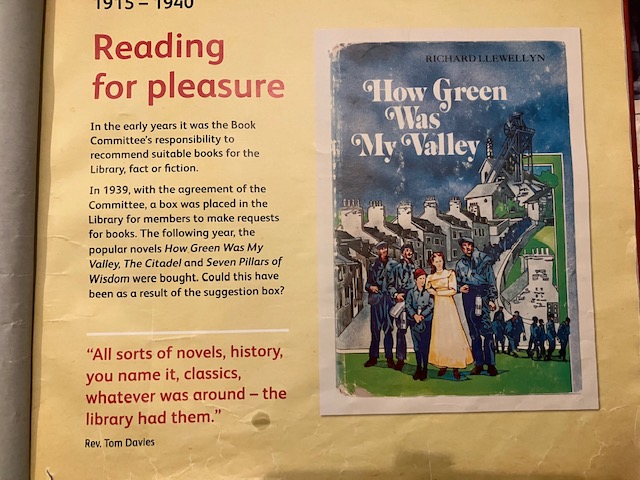
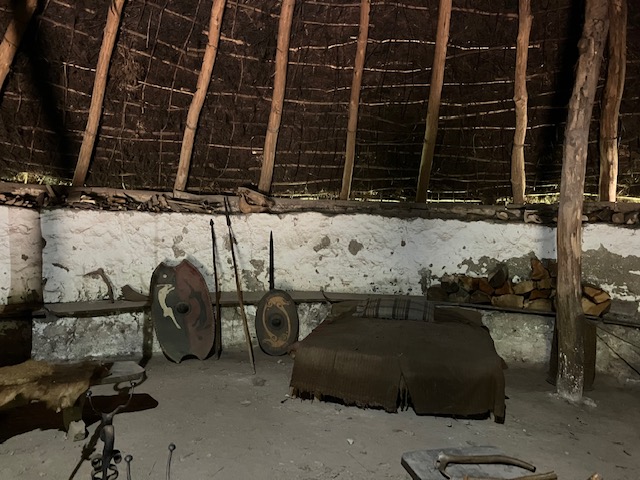

The Way Ahead.
As we have seen, there’s a strong and well funded commitment to outdoor learning in Wales, which provides an exemplary way ahead for others to follow. Currently, a private member’s Outdoor Learning Bill, receiving all part support, is progressing through the Welsh Parliament, the Senedd, which will impose a duty on local authorities to provide all pupils with the opportunity for a week long, government funded, residential visit at an outdoor learning centre. On our previous Utopia trip in May of this year, we visited such a centre in the Delphi Region of Athens, where Greek pupils enjoy the same opportunity. It would be wonderful to see this initiative extended to the whole of the UK.
Impact
We were inspired by our Utopia outdoor learning trip to Wales: our visits to the eco schools, visitor centres and outings to to historic sites and areas of outstanding natural beauty, such as St. David’s on the Pembrokeshire Coast National Park, a cathedral city the size of a village and important Christian pilgrimage site, with the ruins of a magnificent bishops palace, and Llansteffan Castle, with its breathtaking views of the sand-flats of the Tywi estuary and the surrounding countryside.
Witnessing the National Curriculum for Wales in action and the commitment of the Welsh Government and Carmarthenshire schools to providing such rich and varied outdoor learning experiences for all pupils, has spurred all those involved with Utopia to appreciate the opportunities offered by our own local areas and visitor centres and to try out what we’ve seen back at our own schools.
Outdoor Learning – St Vincent’s Catholic Primary School
At St. Vincent’s, class teachers plan regular outdoor learning activities, linked with project based learning themes, values and our key question, this term’s being, ‘How can we be more compassionate, caring and loving?’
In addition to our lead teacher for our Utopia Outdoor Learning, Erasmus project, there are two members of staff with Forest School expertise: one with Level 3, FDA accreditation and one currently training.
With class teachers involved, our forest school sessions have been extended and each year group takes part. Pupils are also growing vegetables outside their classrooms and taking part in an organic gardening project in and around our polytunnel, planting winter vegetables and flower bulbs for the Spring. They enjoy these opportunities to play, explore, use tools and be creative, whilst developing core skills including: increasing independence, risk taking, critical thinking, problem solving, building resilience, reflecting and self- regulating.
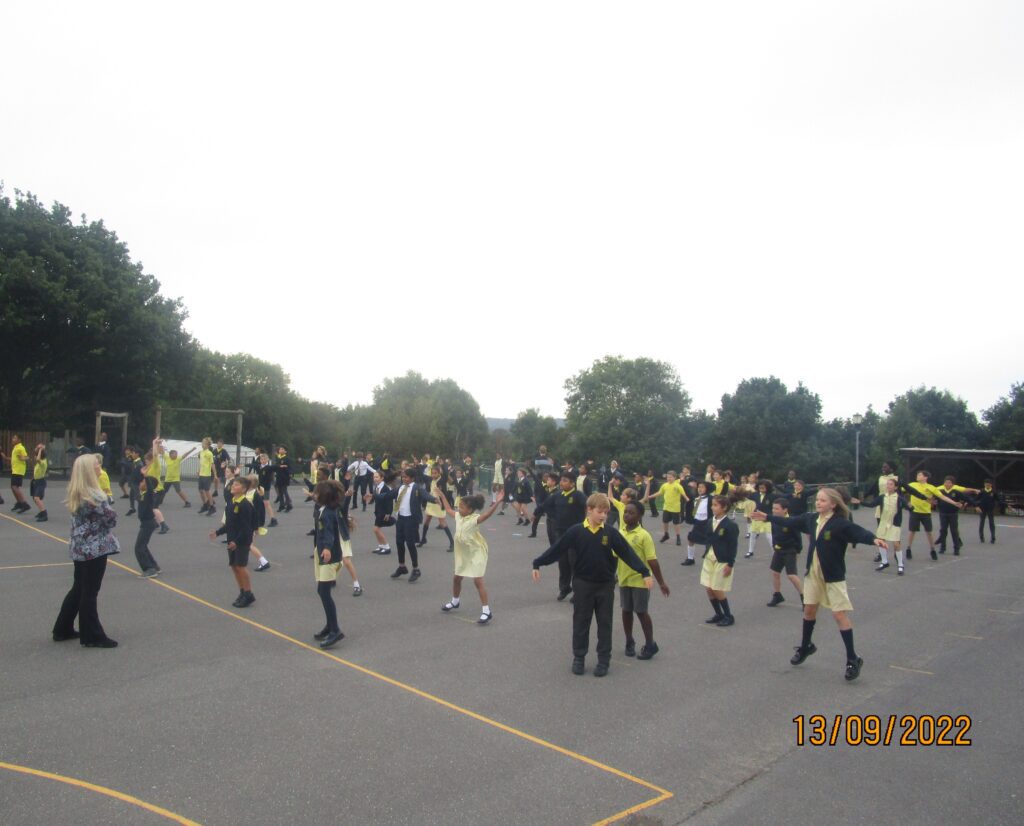
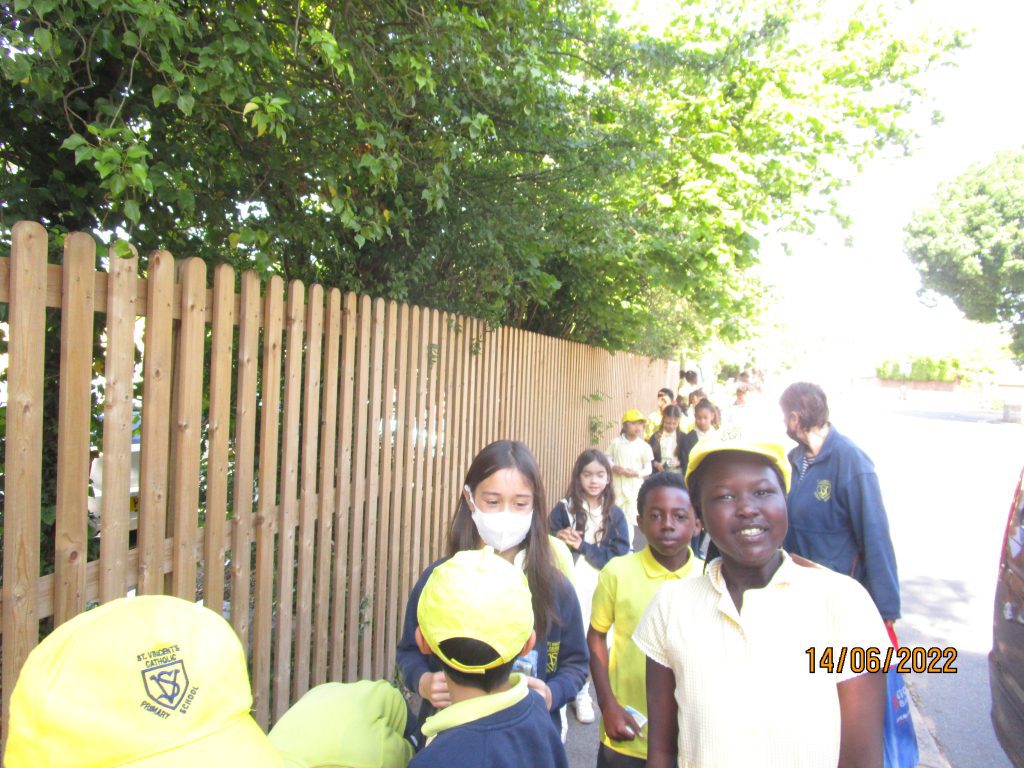
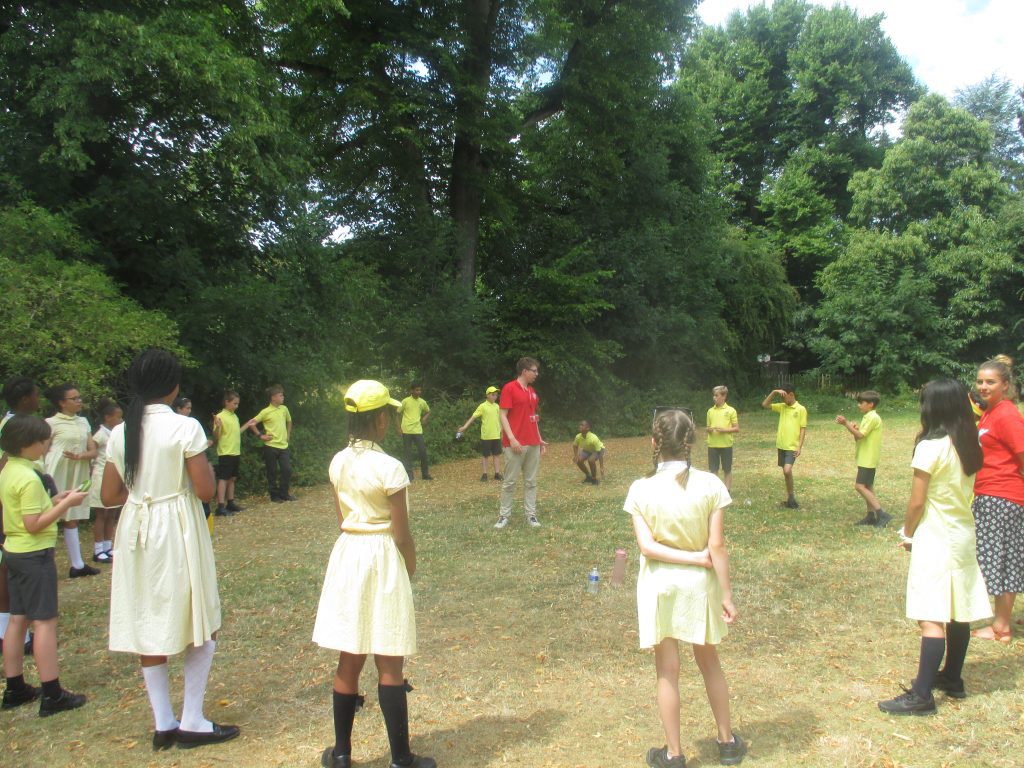
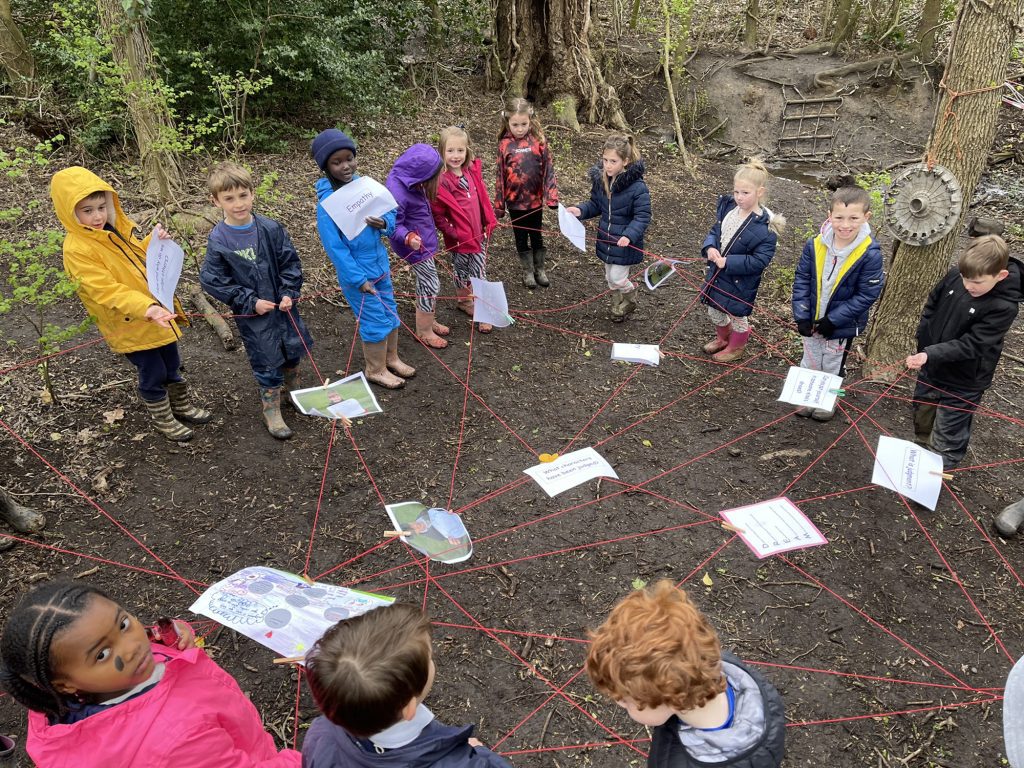


Through these outdoor activities, our children are learning how to be respectful of the natural world and living things, calm and compassionate in the presence of wildlife and how caring for their plants will help them to survive and thrive. In connecting with nature, they are learning about their place, that of others and how to protect the world we all share.




